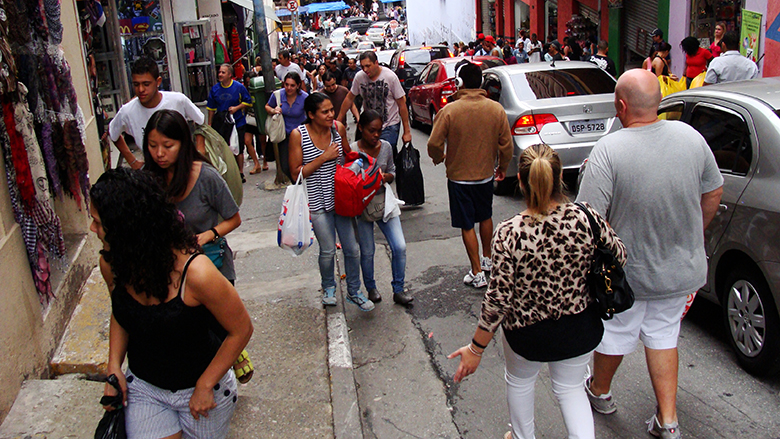To identify the most dangerous places in the world for drivers, passengers and pedestrians, it is enough to locate the following places on the world map: big cities, emerging countries and some areas of Africa.
It is in these locations that leading traffic safety experts are trying to reduce the number of deaths (1.25 million annually) and injuries (between 30 and 50 million a year) caused by traffic accidents.
“These are perfectly preventable tragedies,” said the Director-General of the World Health Organization, Margaret Chan, at the global conference on this subject held in Brasilia this week. “The road traffic accident epidemic was created by human beings and only they can remedy it,” said Nelson Mandela’s granddaughter Zoleka, who became a spokeswoman for the cause after losing her daughter in 2010.
At least 90% of these accidents occur in developing countries, which of course include those of Latin America and the Caribbean. Accordingly, if the world is to meet the United Nations global target of halving the number of global deaths and injuries from road traffic accidents by 2020, efforts should focus on regions that are struggling with extreme poverty.
Big cities are the starting point since half of all traffic deaths occur there. Additionally, by 2050, there will be 2.5 billion people living in urban centers around the world. In Latin America, where eight of every 10 people already live in cities, an estimated 90% of the population will live in urban areas by that year.
The solution goes beyond efforts to improve control over speeding, traffic and alcohol consumption. Urban planning should also be incorporated in interventions to reduce the need for private vehicles to a minimum.
"Investing more in buses and trains will greatly reduce accidents given that these modes of transportation are much safer. Adequate sidewalks are also needed, as are workplaces that are not far from residential areas, for example," said Pierre Guislain, the World Bank’s Senior Director for the Transport and Information & Communications Technology (ICT) Global Practice.
The high cost of accidents
If traffic in the large cities around the world requires maximum attention, the situation in Brazil, China and India is almost unimaginable. Those countries account for 40% of traffic deaths worldwide as a result of the size of their populations and rates of motorization.
Also working against these three emerging nations is the fact that none has adequate legislation with respect to speed limits, according to the World Health Organization.
Nevertheless, Brazil is noteworthy for the laws on alcohol consumption and use of helmets, seatbelts and child car seats. Of the three emerging economies, it is the most advanced in legal terms, but enforcement continues to be deficient, according to the participants of the Brasilia conference. Additionally, quality data are lacking and there are deficiencies in oversight and coordination among the different federal and state road safety programs.
Sao Paulo State has made headway in shifting this trend, however, with the creation of a committee to address the problem in a coordinated manner. As part of this effort, the World Bank financed the assessment of 4,000 kilometers of roads. A new study will evaluate 20,000 kilometers of state roads.
The situation is more difficult for the poorest countries around the world since they account for 16% of all traffic accidents despite having just 1% of the world’s vehicles. Many of these countries are in Africa, the only region where traffic accidents and deaths have increased since 2010. The mortality rate of that continent is 27 / 1,000 people, above the world average of 18 / 1,000.
Nigeria, the most populous country in the region, is one of the few success stories. A joint initiative of the World Bank, the United Kingdom, Bloomberg Philanthropies and the FIA Foundation enabled the country to improve its road infrastructure, monitoring and capacity for federal highway management. As a result, the number of deaths on the roads covered by the project declined 11%.
As we approach 2020, cases such as those of Brazil and Nigeria only reiterate the need for increased technical and financial assistance to the places that need it most. This is especially true because it is even more expensive to deal with the economic consequences of accidents, injuries and deaths: they consume up to 6% of GDP of developing countries.
"The losses can even strip these countries of the benefits of economic growth,” said Chan.

